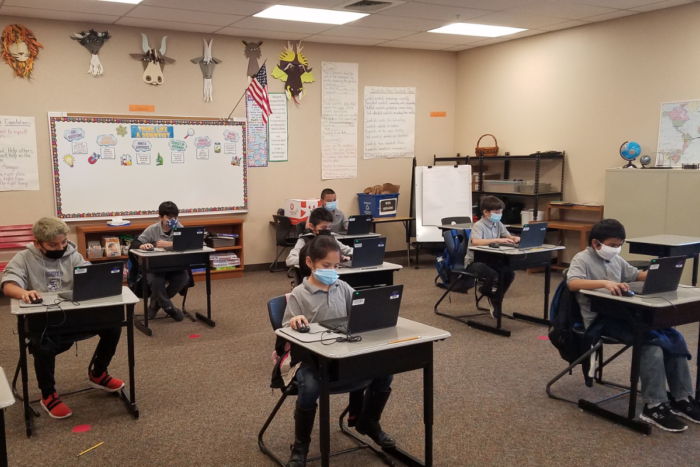
Understanding the Digital Divide
This guest post was written by Haley Brown, a First Book marketing and Communications Intern. She is currently an undergraduate student at The George Washington University in Washington, D.C.
The “Digital Divide” refers to the gap between demographics and regions that have access to modern technology, and those that don’t or have restricted access. Contributing factors to the growth of the digital divide include low-income levels, geographical restrictions, lack of physical access to technology, and digital illiteracy. The digital divide in schools has moved past the binary issue of having or not having computers. According to Splicing the Divide: A Review of Research on the Evolving Digital Divide Among K–12 Students, definitions of access now also account for whether the computers exist at the classroom level (the location of the computers in the school—classrooms vs. computer lab), whether the computers have an Internet connection, information technology (IT) capabilities such as speed and bandwidth, the types of software available, the existence of safety precautions such as extensive firewalls and blocking software, and the ratio of students to computers.

How is First Book Helping to Close The Digital Divide
First Book is constantly on a mission to provide equitable resources to communities in need, including technology to close the Digital Divide. First Book partners with organizations like LEGO and Intel to help bridge the technological gap and bring more opportunities to Title I schools through programs including the Creating Learning Connections initiative. This program provided school districts serving kids in need with critical at-home and in–the-classroom learning resources, including internet connectivity, technology devices and hands-on STEAM learning solutions. Through this initiative, Intel and CDW-G provided a total of $5 million in personal computers, software, configuration services and digital learning resources. They also provided stipends of $4,000 to each awarded district to address home internet connectivity for kids in need. Read more about our collaborations with these companies on our blog!
“While school districts and teachers have stepped up in amazing ways to support their students during this time, leaving kids without devices and connectivity is the equivalent of locking them out of the school system. We are so grateful for the commitment and leadership of Intel Corporation, LEGO Education, the LEGO Foundation and CDW-G for helping us bridge the digital divide for thousands of children in need across the country!
Kyle Zimmer, CEO and Co-founder of First Book
How Does The Digital Divide Impact Education
Access to the internet and technology is a significant barrier to learning. According to a study by the Annie E. Casey Foundation, in 2020, about 16 percent of households did not always have access to the internet and computers for remote learning. In Black households, that percentage increased to 25 percent and in Latine households, 20 percent did not always have access. The Digital Divide means students without modern devices or internet lack access to the same up-to-date resources and learning opportunities that technology provides. Education in digitally divided communities is unable to reach the same high quality and level of rigor that areas with access to the latest technology have made their standard.
How COVID worsened the Digital Divide
First Book released the results of a nationwide survey of 282,500 educators that shows 40% of children in need in the U.S. do not have reliable internet and almost 40% are without access to functioning devices. According to Cory Turner of NPR News, the closure of schools in March of 2020 due to the pandemic exacerbated an existing crisis in education for children in poverty, millions of whom do not have access to enable virtual learning. These children are isolated without educational support and are falling further behind. Students who spent the least amount of time learning remotely during the 2020-21 school year — just a month or less — missed the equivalent of seven to 10 weeks of math learning, says Thomas Kane of the Center for Education Policy Research at Harvard University. Remote learning hit already struggling communities the hardest. High-poverty schools spent about 5.5 more weeks in remote instruction during the 2020-21 school year than low- and mid-poverty schools. Researchers also found a “higher incidence of remote schooling for Black and Hispanic students.” Of these schools that stayed remote for the majority of the 2020-21 school year, students missed the equivalent of 22 weeks of in-person math learning. This learning deficit will impact students long after the 2020-21 school year, with extra work required to make up for lost learning.
Partner With First Book
First Book works closely with leading businesses, non-profits, and individuals to promote equal access to quality education for kids in need. Together, we have distributed more than 225 million new books and learning materials to schools and programs serving children from low-income families.
We are deeply grateful for the support of our generous partners and eager to collaborate with organizations that care about making a difference on behalf of kids. We invite everyone to explore ways to work together to provide even more books and resources to kids who need them.
